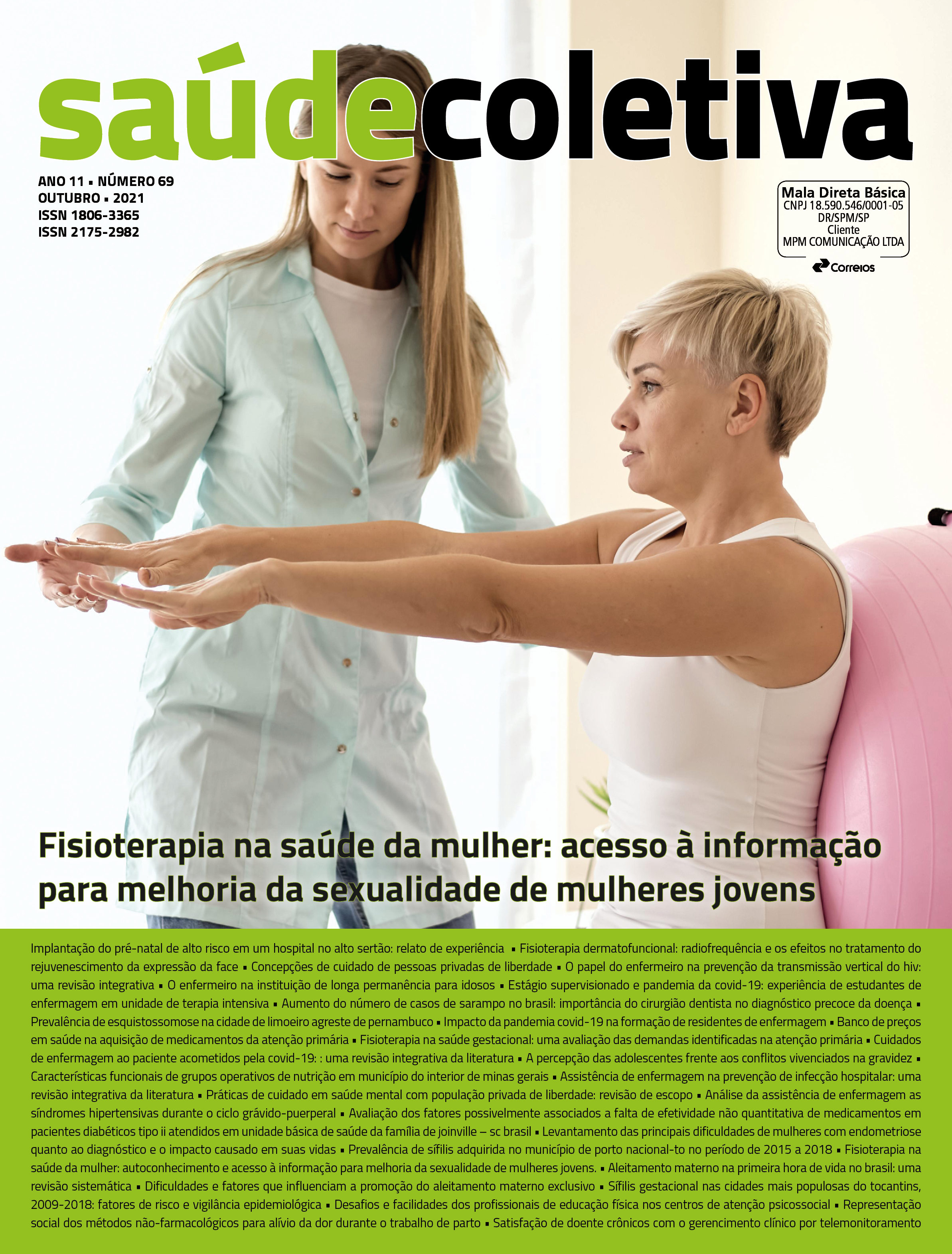Discent resilience: modifications of the teaching method in front of covid-19
DOI:
https://doi.org/10.36489/saudecoletiva.2021v11i69p8271-8285Keywords:
University education, Learn online, Coronavirus lnfectionsAbstract
Objective: To understand the perception of medical students through the adaptations of the teaching method resulting from the covid pandemic 19. Method: This is an exploratory, descriptive research with a qualitative approach. Developed in a private Higher Education lnstitution, located in the northwest of Paraná, which has a medical course that has been adapted to the requirements of the Ministry of Health and Education for the preparation of remate classes. Results: The research involved a total of 120 participants, aged between 18 and 39 years, of which 84 were women and 36 men. Based on the answers of the students, it was possible to mark four categories: ldentify the main adaptations of the students; Observation of students in relation to distance education; Evaluate the impacts on academic and professional training; Recognizing the positive aspects of remate emergency education. Conclusion: Therefore, it is concluded that learning has changed due to distance, however, there have been other advances such as the use of new technologies to continue learning.
References
Johns Hopkins University Medicine. COVID-19 Dashboard by the Center for Systems Science and Engineering (CSSE) at Johns Hopkins University (JHU); 2020. Available from: https:#'coronavirus.jhu.edu/map.html. 2. Khatib, ASE, Chizzotti A. Aulas por videoconferência: Uma solução para o distanciamento social provocado pela COVID-19 ou um grande problema? Revista EDaPECI São Cristóvão (SE). 2020 set./dez.; 20(3): 26-45. Disponível em: Vista do Aulas por videoconferência: uma solução para o distanciamento social provocado pela Covid-19 ou um grande problema? (ufs.br). 3. Hodges, C; Trust, T; Moore, S; Bond, A; Lockee, B. Diferenças entre o aprendizado online e o ensino remoto de emergência. Revista da Escola, Professor, Educação e Tecnologia, 2020; 2: 1-12. Disponível em: https:#'escribo.com/revista/index.php/escola/article/view/17 /16. 4. Silva, O. D. L. A Estatística e o Ensino Superior em regime não presencial no período da pandemia por Covid-19. Correio dos Açores, p. 17-17, 2020. Disponível em: https:#'repositorio.uac. pt/handle/10400.3/5526. 5. Lawson, T., Comber, C., Gage, J. & Cullum-Hanshaw, A. (2010). lmages of the Future for Education? Videoconferencing: A Literature Review. Technology, Pedagogy and Education, October 2010; 19(3): 295-314. Available from whttps:#'ww.learntechlib. org/p/69674/. 6. Joye C. R.; Moreira, M. M.; Rocha, S. S. D. Educação a Distância ou Atividade Educacional Remota Emergencial: em busca do elo perdido da educação escolar em tempos de COVID-19. Research, Society and Development, 2020; 9(7): e521974299-e521974299. Disponível em: https:#'rsdjournal. org/index.php/rsd/article/view/4299. 7. Torres A. C. M.; Alves, L. R. G.; Costa, A. C. N. Educação e Saúde: reflexões sobre o contexto universitário em tempos de COVID-19. 2020. Disponível em: https:#'doi.org/10.1590/SciELOPreprints.640. 8. Jesus GJ; Oliveira, LB; (aliaria, JS; Queiroz, AAFL; Gir, E; Reis, RK. Difficulties of living with HIV/Aids: obstacles to quality of life. Acta Paul Enfermagem, 2017; 30 (3): 301- 7. Disponível em: https:#'doi.org/10.1590/1982-0194201700046. 9. Gomes, VTS; Rodrigues, RO; Gomes, RNS; Gomes, MS; Viana, LVM; Silva, FP. A Pandemia da Covid-19: repercussões do ensino remoto na formação médica. Revista Brasileira de Educação Médica, 2020; 44 (4): 1-2. Disponível em: https:#'doi. org/10.1590/1981-5271 v44.4-20200258. 1 O. Mélo CB, Farias GD, Moisés L de S, Beserra LRM, Piagge CSLD. Remate education in Brazilian federal universities: challenges and adaptations of education during the COVID-19 pandemic. RSD [Internet]. 2020 Nov.19; 9(11): e4049119866. Available from: https:#'rsdjournal.org/index.php/rsd/article/view/9866. 11.Brooks, SK, Webster Rk, Smith LE, Woodland L, Wessely S, Greenberg N, et ai. The psychological impact of quarantine and how to reduce it: rapid review of the evidence. The Lancet, 2020/14 March; 395:912-920. Available from: The psychological impact of quarantine and how to reduce it: rapid review of the evidence (thelancet.com). 12. Gusso, HL; Archer, AB; Luiz, FB; Sahão, FT; Luca, GG, Henklain, MHO; et ai. Ensino Superior em tempos de pandemia: diretrizes à gestão universitária. Educ. Soe., 2020; 41: 1-27. Disponível em: https:#'doi.org/10.1590/es.238957. 13. Hartmann, M.; Boff, T. Aulas a distância aumentam fosso entre escolas públicas e particulares. GAÚCHAZH, Porto Alegre, 2020/17 maio. Disponível em: Aulas a distância aumentam fosso entre escolas públicas e particulares I GZH (clicrbs.com.br). 14. Sunde, RM; Júlio OA; Nhaguaga MAF. O ensino remoto em tempos da pandemia da covid-19: desafios e perspectivas. Revista Epistemologia e Práxis Educativa, Teresina, Piauí. 2020 set./dez, 3(3). Disponível em: o ensino remoto em tempos da pandemia da covid-19: desafios e perspectivas I sunde I epistemologia e práxis educativa - epeduc (ufpi.br). 15. Borba RC do N, Teixeira PP, Fernandes K de OB, Bertagna M, Valença CR, Souza LHP de. Percepções docentes e práticas de ensino de ciências e biologia na pandemia : uma investigação da Regional 2 da SBEnBio. REnBio [Internet]. 7 º de julho de 2020; 13(1 ):153-71. Disponível em: https:#'sbenbio.journals.com.br/ index.php/sbenbio/article/view/337. 16. Hall G, Laddu DR, Phillips SA, Lavie CJ, Arena R. A tale of two pandemics: How will COVID-19 and global trends in physical inactivity and sedentary behavior affect one another? Prog Cardiovasc Ois. 2021 Jan-Feb;64:108-110. 17. Bezerra KP, Costa KF de L, Oliveira LC de, Fernandes ACL, Carvalho FPB de, Nelson ICA de SR. Remate teaching in state public universities: the future that is present. RSD [Internet]. 2020Aug.21 [cited 2021Jul.5];9(9):e359997226. Available from: https:#'rsdjournal.org/index.php/rsd/article/view/7226. 18. Silva EGJ, Eulália MC, Souto RQ, Santos KL, Melo RLP, Lacerda AR. A capacidade de resiliência e suporte social em idosos urbanos. Ciênc. saúde coletiva, 2019; 24(1): 7-16. https:#'doi. org/10.1590/1413-81232018241.32722016.







